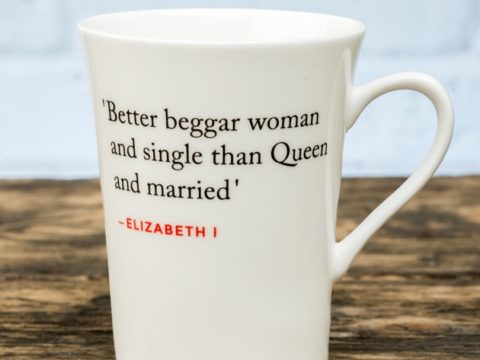Elizabeth I: Life Story
Chapter 8 : Scandal, Smallpox and Succession
In the early days of her reign, whilst Elizabeth contemplated marital options, she was conducting a very public relationship with Lord Robert Dudley. The two were seen everywhere together – dancing, hunting, walking. Rumours quickly spread that their friendship was more than platonic. For Elizabeth, scandal of this sort could spell disaster – not only was lack of chastity in a female monarch considered a sin and a sign of inherent unfitness to rule, but there was more: even if she had wanted to so far demean her rank as to marry the son of an executed traitor, she could not, as he was already married.
Her other councillors were appalled by her fondness for Dudley, Cecil even went so far as to make his aversion to the situation known to the Spanish ambassador. Their relationship caused scandal across Europe, intensified in 1560 when Amy, Lady Dudley was found dead at the bottom of a staircase. Mary, Queen of Scots and Queen-consort of France, was heard to remark that Elizabeth was planning to marry her horsekeeper, who had murdered his wife to make room for her. It seems probable that she came to regret that insult. On hearing the news, Elizabeth banished Dudley from court and ordered a full inquiry. He was exonerated but his reputation was badly damaged, and made it more-or-less impossible for them to marry. The truth behind Amy’s death has been a matter of speculation for centuries and was re-examined by Chris Skidmore in a book reviewed here.
On 10th October 1562, Elizabeth felt unwell. Foolishly, according to her courtiers, she took a bath, which they believed weakened her, making her vulnerable to infection. Within a few days it was clear that she had caught smallpox. At first, her symptoms were fever, debility and the loss of the power of speech. No spots had appeared, leading her physicians to believe that death was inevitable. The Privy Council hastily convened. There was only one question before them – if the queen died, who would succeed her?
There were several possible candidates, each with differing degrees of credibility in law, religion and personality. The Queen of Scots was the obvious candidate under common law, but her Catholicism and links to France made her unattractive to Elizabeth’s ministers. Cecil advocated Lady Katherine Grey, sister of the Lady Jane Grey who had been promoted as queen on the death of Edward VI, who was the heir under Henry VIII’s will. A third possibility was the Earl of Huntingdon, descendant of the York royal family. None of the candidates commanded any majority amongst the councillors. Meanwhile, the queen’s cousin, Henry Carey, Lord Hunsdon, had summoned another doctor, a German physician named Dr Burcot. Burcot had Elizabeth, who was by now unconscious, wrapped in red flannel and brought close to the fire. After two hours, the queen woke up, and had recovered her power of speech. Her councillors were admitted to the bedroom, and immediately she was asked to name her successor. To their horror, she refused, instead requesting that Dudley be appointed protector of the realm with an annual salary of £20,000. She assured them all that, although she loved Lord Robert, nothing improper had ever passed between them. Anxious not to distress her, the Council appeared to accede to her wishes. Fortunately for the peace of the kingdom, Elizabeth made a steady recovery. By 25th October she was well enough to attend to affairs of state, although her face was still inflamed and scabbed and she remained out of sight. Within a further week, the pox had disappeared, apparently leaving her unscarred – a remarkably lucky escape. Less fortunate than Elizabeth was her lady-in-waiting, Mary Dudley, Lady Sidney. Lady Sidney had nursed the queen devotedly and paid the price by contracting smallpox herself. She recovered but was terribly disfigured. Despite this brush with mortality, Elizabeth still refused to name a successor. Soon after, Lady Katherine was more-or-less put out of the running by her clandestine marriage (which was declared invalid) but Elizabeth would not make any firm arrangements. She indicated to the Queen of Scots, who was desperate to be confirmed as the English heir, that she would make the requisite declaration, if Mary married a man of Elizabeth’s choosing, but, despite Mary’s repeated attempts to ascertain who Elizabeth had in mind, the latter proved coy. Eventually, she suggested none other than Dudley, presumably reasoning that his prior loyalty to Elizabeth would outweigh any temptation he might have to hurry Mary, as his wife, to the English throne. To make the match slightly more palatable (or perhaps this was Elizabeth’s ulterior motive throughout) Dudley was promoted to the earldom of Leicester.
Initially disgusted and offended at the idea of being offered Elizabeth’s cast-offs, Mary showed herself willing to consider the match, in return for being confirmed as Elizabeth’s heir. But Elizabeth would not commit herself, and, in frustration, Mary married Henry, Lord Darnley, who had a creditable claim to the English throne as the English-born grandson of Elizabeth’s elder aunt, Margaret, Queen of Scots.
